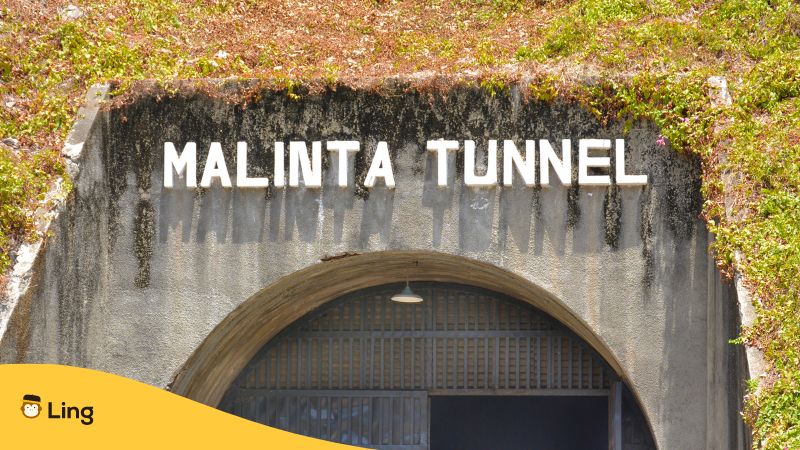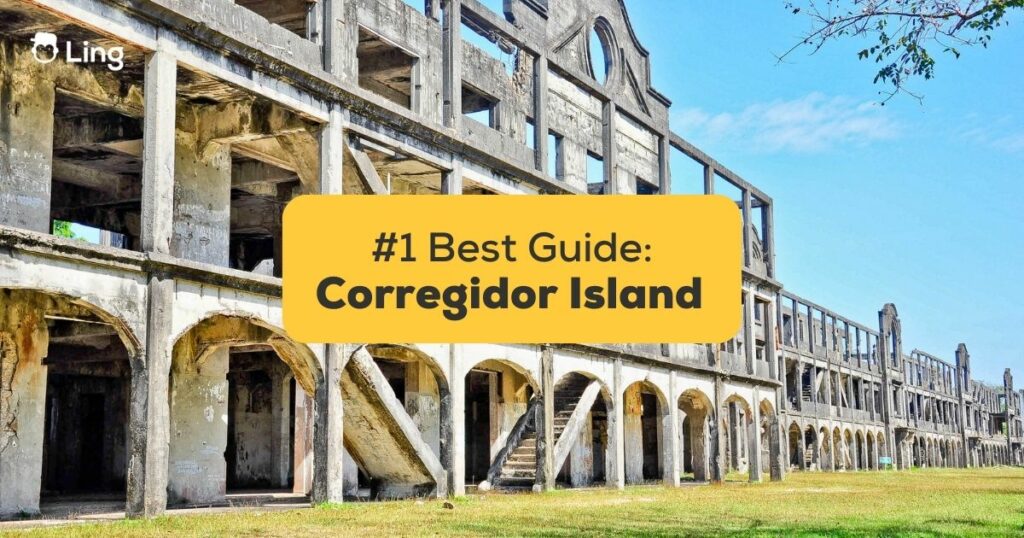When people think of tropical getaways in the Philippines, images of pristine beaches and azure waters likely come to mind. As stunning as those spots are, I’m here to convince you to consider adding another destination to your itinerary – the historic Corregidor Island.
I know, I know, a tiny rocky island in Manila Bay that was the site of intense battles during WWII may not sound as alluring as lounging on the sands of Boracay. But hear me out! Corregidor packs a big punch into its small size, offering visitors a glimpse into its dramatic role in Philippine history and a surprising number of nature trails, ruins to explore, and activities catered to an array of interests.
As someone who has spent a decent chunk of time roaming ‘The Rock’ over the years, I’ve put together this guide which I firmly stand behind as the #1 resource for travelers seeking to explore Corregidor Island. Within this post, you’ll discover essential info on how to get there, the must-see sights for history buffs and nature lovers alike, handy Tagalog phrases, tips on guided tours and accommodations, and, importantly, where to refuel when the island adventures spark an appetite!
So if you are heading to the Philippines and seeking to uncover the stories of an infamous island fortress while taking in panoramic views of Manila Bay’s famed sunsets, read on! I’ll convince you why this once-formidable garrison should be on your travel itinerary.
Table of Contents

Corregidor Island
Situated at the entrance of Manila Bay, Corregidor may be tiny in size – we’re talking about a tad over 2.12 square miles – but it packs a momentous history and a surprising array of sights into its small footprint.
Nicknamed “The Rock,” Corregidor served as the headquarters of the Allied Forces and the site of General Douglas MacArthur’s command in the Philippines during World War II. Its strategic location allowed it to function as a critical communications and defense hub guarding access to Manila through the bay.
When the Japanese soldiers invaded in the 1940s, its miles of underground tunnels, barracks, and battalions waged intense battles and bombings, which eventually forced the Allied surrender of the island.
Nowadays, the once-embattled island welcomes tourists and serves as a poignant memorial to fallen Filipino and American soldiers. Beyond its wartime legacy, Corregidor impresses visitors with its ruins, coastal scenery, and wildlife. The island packs a mean punch of history, nature, and beauty, which you’ll soon find yourself regaling to friends over post-adventure cocktails in Manila!
From descending into its doomed war tunnels to catching golden hour along seaside artillery batteries, Corregidor offers no shortage of landmarks and vistas to fill a day-trip or overnight stay. I’ll unpack the essential sights so you can craft the perfect Corregidor experience.
How To Get To Corregidor Island?
Alright, I’ve hooked you on venturing out to Corregidor! Now comes the logistics of actually getting yourself to this island gem. Here’s the thing: The only way to visit this Philippine island is by water!
If you’re flying right out of the Ninoy Aquino International Airport, the most straightforward way to embark on a Corregidor day or overnight trip is via the Esplanade Seaside Terminal (Mall of Asia Complex, Pasay City). For this, you have to officially connect with the sole facilitator of the island, which is the Corregidor Foundation Inc. (CFI).
If you’re feeling more intrepid, you can opt to take public transportation from NAIA to Bataan and catch the first-come, first-served ferries from third-party organizations. Price and schedule-wise, this works fine but involves more moving parts – think sporadic hours, sometimes long queues and little guidance upon arriving.

What Are The Best Things To Do At The Corregidor Island?
Ride The Tram
Alright, friends, you’ve arrived on Corregidor Island, raring to explore! While walking between sites in the tropical heat is certainly feasible, I strongly advise you to take the classic Island Tour via the tram.
This open-air tram allows you to cover all the main attractions without breaking a sweat. Designed specifically for visitors, it travels a set route delivering live commentary by guides along the way. It’s air-conditioned, too – sweet relief from the humidity!
Snaking around the island, the tram stops offer opportunities to hop off and poke around landmarks before reboarding. From the sprawling barracks to the Pacific War Memorial and Mile Long artillery site, the greatest hits are all bundled into this tour.
Most package deals automatically include the tram excursion. But you can also buy solo tickets if you take the public ferry. I suggest starting here to get your bearings and the lay of the land, so to speak.
The guides impart context and stories to complement the sights – perfect for history buffs! But they also point out wildlife like the Molave trees unique to the island if nature is more your speed.
Gliding through jungle and past war relics as commentary unveils one chapter after another of Corregidor’s saga, I’m telling you, the tram gives you the complete experience!
Visit The Battery Way
Situated on the island’s western tip, this rugged trail delivers killer views. We’re talking glimmering South China Sea waters, the outlines of Cavite province, and the imposing steel cannons and mortars left behind from intense campaigns.
As you follow the path around the cliffs, various attacks and sieges from WWII American and Filipino defenders and previous wars unfurl through the battered landscape. It may not seem as flashy as tropical beaches initially, but trust me, standing amid crumbling bunkers with the sea breeze whipping by is an experience.
Keep your eyes peeled along the walk for local bird species too. If you’re lucky, you might spot one of the adorable fruit bats that call The Rock home hanging around bombing sites now alive with vegetation. It’s this odd clash of wartime grit meeting tropical paradise that makes Corregidor so fascinating!
Walk The Mile-Long Barracks
Of all the remnants strewn throughout The Rock, the sight of the crumbling Topside Barracks always ignites goosebumps and gives visitors a visceral sense of the armies once garrisoned there.
Originally built for 20,000 troops, this Corregidor monument spanned over – you guessed it – nearly a mile, making it a looming landmark. In fact, it is considered the “world’s longest military barracks.” Today, only 24 decaying structures of the barracks remain, yet their concrete shells still dwarf passersby.
Walking through feels like stepping into a ghost town lost to ravaging bombardments. Sightseeing through destruction may seem eerie, but witnessing firsthand the scale and sacrifice of The Rock’s inhabitants during WWII is profoundly moving.
Visit The Pacific Memorial
Dedicated to honoring fallen American and Filipino soldiers, this tasteful memorial museum packs informative placards and moving exhibits into an open-air complex. Chronicling major battles, Japanese occupations, and profiles of heroic leaders, the flow of WWII is clearly conveyed alongside local Bataan acts of bravery.
While exploring the various wings, the realities of war permeate the statues and artwork surrounding you. There’s an elevated walkway delivering gorgeous vistas of the island…alongside an actual guerilla tunnel freshly excavated for guests to crawl through! Talk about hands-on history.
On my first-ever visit to Corregidor, I’ll admit this site brought me to tears as it hammered home the horrors endured for freedom. Nowadays, I find solace against the backdrops of dreamy sunsets, but the Memorial’s raw insights stick with you long after the ferry pulls away.
Walk Inside The Malinta Tunnel
Of all the haunted havens on Corregidor, none feel more chilling than descending into the Malinta Tunnel. This sprawling underground network of darkness and damp air perfectly encapsulates The Rock’s ominous wartime past.
Originally carved out by the Americans and later seized by the Japanese to store ammunition, the Malinta Tunnel stretches over 830 feet through the island’s interior. Illuminated by sparse lightbulbs, exploring the laterals evokes ghostly corridors.
As you walk deeper, tales of violent skirmishes, months of hiding, and makeshift surgeries echo off the walls in imagined cries. Markers indicate the underground laterals where hundreds endured cramped quarters. Standing inside, you gain spatial awareness of the extreme confinement and deprivation endured.
Though calm today, I swear sometimes a cold draft sweeps by. Every quiet sound makes you glance over your shoulder as the tunnel’s sinister past feels palpable. The deeper you wander, the darker and more chilled the mood becomes.
Check Out The Corregidor Lighthouse
Standing tall at 60 feet, this white and red tower has been guiding ships to safe harbors since the late 1800s. Surviving tumultuous battles that left surrounding structures as rubble, the enduring lighthouse serves as a beacon of hope.
It may not boast bells and whistles inside, but the panoramic views from atop the lighthouse are stunning. On clear days, rays glint off the Manila Bay waters as cargo ships head towards port. Along the perimeter, portions of Cavite province materialize.
Pack your camera – if lucky, you can capture the Navy warships docked at Sangley Point lined up across the shipping lane. Sunset is prime time for those iconic golden hour shots as the skies ignite in pink and purple hues!

Tagalog Words For Visiting The Corregidor Island
As you gear up for your Corregidor adventure, arm yourself with a few handy Tagalog phrases to break the ice with locals and guides. Finding common ground through language sets a welcoming tone from the start.
Now Tagalog may seem intimidating initially. But these essential expressions I’ve picked as a native Philippines travel writer will have you conversing and forging bonds in no time! Before hopping the ferry over, try memorizing this short starter list phonetically:
- Hello – Kumusta?
- Thank you – Salamat!
- Please – Paki or Paki-usap
- Friend – Kaibigan
- Cheers! – Mabuhay!
Ready To Visit The Philippines This Year?
Alright, friends – I’ve unpacked my insider’s guide across Corregidor, sharing historical gems from haunting tunnels to picture-perfect coastal trails. By now, you’ve surely grasped why this island makes for an unforgettable detour while visiting my home country.
Beyond serving up scenic vistas and WWII narratives, exploring Corregidor showcases the resilient Filipino spirit and culture. As your travel writer/tour guide buddy, I hope I’ve brought the island’s legacy to life and sparked some serious tropical wanderlust!
When navigating The Rock’s monuments to sacrifices made for freedom, I find myself contemplating my own nation’s hard-won liberty. No matter where we journey from, Corregidor links us all through human stories of courage in the face of oppression.
If that’s sparked curiosity about diving deeper into the language, I highly recommend downloading the Ling app. The interactive Tagalog lessons from the app will make mastering pronunciations and conversational vocabulary a blast! Just 10 minutes a day will have you stunning locals in no time!
So who’s ready to escape to tropical beaches and historic sites of the Pearl of the Orient Seas soon? Shoot me a message if Corregidor convinced you it’s more than golden shores that make the Philippines special. I’m happy to offer more insider travel tips anytime. Just say the word, mga kaibigan (my friends)!



































































